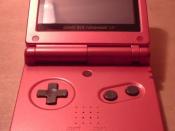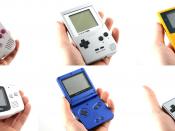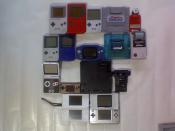Introduced in 1989 as a big, neutral-gray brick of a B&W portable game machine, the Nintendo Game Boy may have been considered instantly obsolete by some. A Z80 chip, something that had fallen out of use with personal computer manufacturers halfway through that decade, powered it. Its display was monochrome and LCD with a resolution of 160x140. Four AA batteries supplied about 20 hours of play. In an age when the NES and late 80s arcade games had spoiled players with stereo sound; the only way to get stereo out of the Game Boy was with its headphones.
But the "killer app" of the Nintendo Game Boy was its portability. But hadn't this been tried before, with the Milton-Bradley Microvision around 1982? Sure it had. But the Microvision didn't come packed with what was, at the time, the most popular game in the world: Tetris.
Nintendo and a few other manufacturers released a whole slew of Game Boy titles, and it seemed uncertain what genre of gaming would be the machine's strength: puzzle games, like Tetris, or decent classic arcade adaptations such as Qix and Super Mario Bros.?
The confusion was intensified by the Super Game Boy, a module fitting into the Super NES cartridge slot, which allowed the machine to play Game Boy games encoded with minimal color schemes.
It was 1997 before the true compelling application of the Game Boy was discovered: a little Japanese creation, which every child in America now knows as Pokemon. Thus, starting the huge pokemania craze. Although starting to die down some, still in full effect.
The next installment in the Game Boy lineup was the Game Boy Color introduced in 1999, sprucing up the same basic machine although twice as fast and with a color LCD display, still non-backlit. It could display...



Good...But
For a 10th Grader you should know that the body paragraphs must be bigger. Great information. Funny topic. Add more commentary next time. I would have given it a B+. You should merge a few body paragraphs. Again I like the essay but it needs more work. It seems like you need to spend more time on it. Essays take a lot of time. You also didn't mention how the Gameboy Color and Advance Games could not be used on any older gameboy. What happened to the history of the GAMEBOY POCKET, the smallest gaming system of it's time!!! Add another paragraph!
4 out of 4 people found this comment useful.